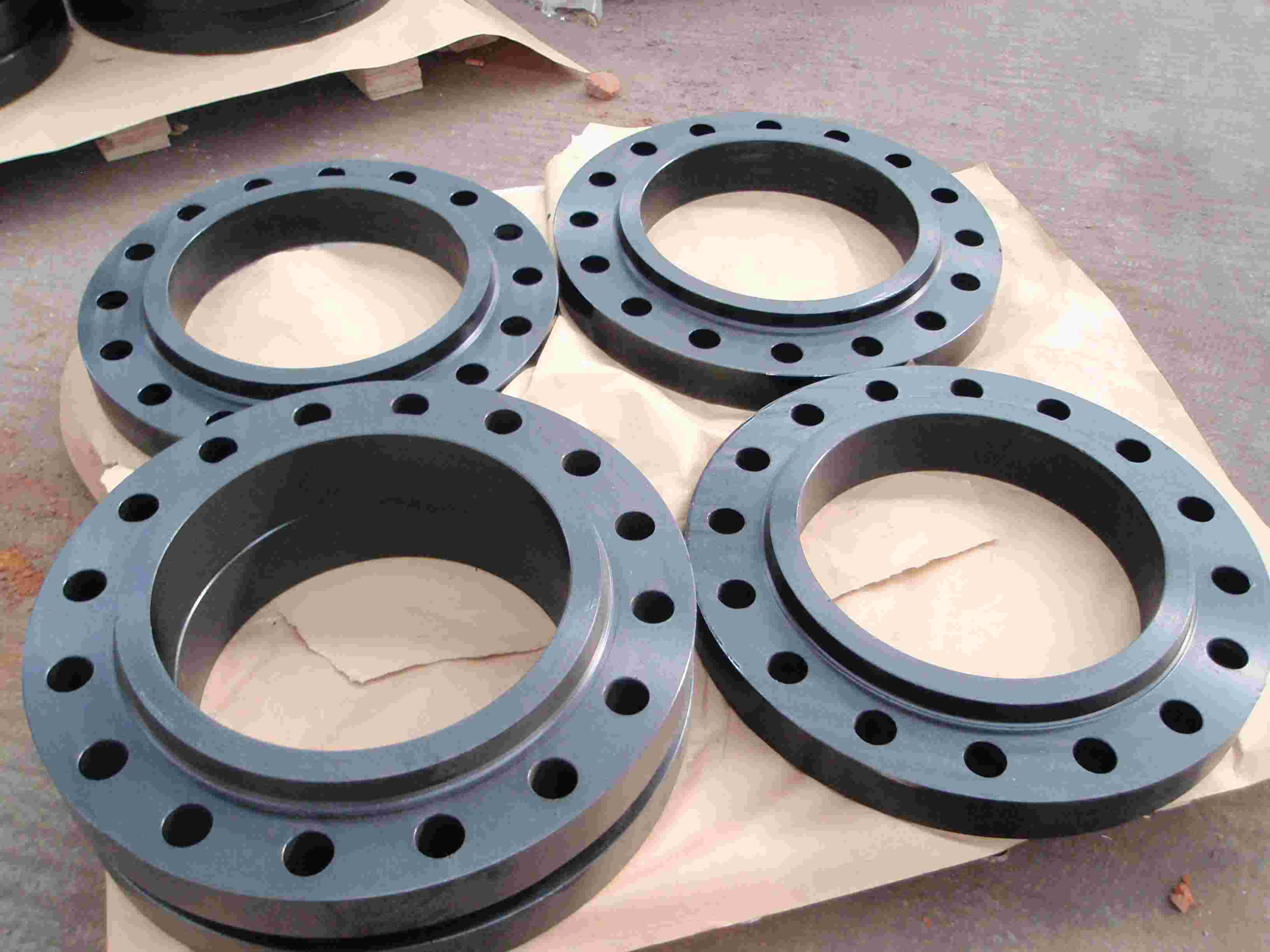Export Office: 21Floor, No.5 Nanhai Zhi Road,Qingdao, Shandong ,China
Work Shop: Beian Industrial zone, Qingdao,Shandong,China
+86 532 88550858
Martin
Inquiry now
Flanges are critical components used to connect pipes, valves, pumps, and other equipment in various industries. The face of a flange, the part that forms a seal with a gasket, is essential in maintaining a leak-proof seal. Different types of flange faces include flat face, raised face, and ring-type joint face. The flat face is perfectly level, suitable for low-pressure applications. Raised face is commonly used in standard applications, designed to concentrate more pressure on a smaller area of the gasket, enhancing the seal. Ring-type joint faces are used for high-pressure applications, where metal-to-metal seals are required. Each type of flange face serves specific purposes and requires careful handling to maintain its integrity.
Serving more than 35 countries and regions for more than 20 years, FLUIDO is a top producer and supplier of steel valves, fittings, and flanges. Apart from producing its own flanges, FLUIDO forged partnerships with Shandong and Hebei industries to offer a comprehensive array of products and comprehensive one-stop sourcing services to its clientele.
Flange face damage can occur due to several factors. One primary cause is improper handling during transportation and installation. Dropping or mishandling flanges can lead to nicks, scratches, and dents on the sealing surface. Additionally, using inappropriate tools can lead to surface damage. Another common cause is contamination by foreign particles such as dirt, dust, or rust, which can scratch or corrode the flange face. Insufficient training and awareness among personnel handling these critical components can also contribute to damage. Ultimately, these damages compromise the flange's ability to form a proper seal, leading to potential leaks and operational failures.

Maintaining the integrity of flange faces is crucial for operational efficiency. Damaged flanges can lead to leaks and subsequent loss of fluids, often resulting in unscheduled downtime to address the issues. These interruptions disrupt normal operations and can significantly affect overall productivity. Efficient operation relies on the flawless performance of all components, and compromised flange faces can result in frequent maintenance and repairs, decreasing efficiency.
The financial impact of damaged flange faces can be substantial. Replacing or repairing damaged flanges can be expensive, especially if the damage is extensive or affects multiple units. Additionally, the associated costs of downtime, labor, and materials required for repairs further escalate the expenses. Preventing flange face damage from the outset is a cost-effective approach to maintaining budgetary control and optimizing resource allocation within an organization.
Safety is paramount in any industrial setting, and damaged flange faces pose significant risks. Leakages resulting from damaged flanges can lead to hazardous working conditions, including potential exposure to harmful chemicals and gases. In severe cases, this can trigger accidents, fires, or explosions, endangering lives and property. Ensuring flanges are handled and installed correctly helps in mitigating these risks, fostering a safer working environment.
A clean and organized workspace is fundamental in preventing flange face damage. Ensuring all surfaces are free of dirt and foreign particles minimizes the risk of contamination. Work areas should be kept tidy, with tools and equipment stored properly when not in use. An organized environment not only protects flange faces but also improves overall efficiency and safety by reducing clutter and potential trip hazards.
Adequate lighting is essential when handling flanges. Proper illumination ensures that workers can see clearly, crucial for avoiding accidental bumps or drops. Well-lit areas make it easier to inspect flanges for any pre-existing damage or contaminants before installation. Good lighting conditions improve precision in handling and installing flanges, reducing the chances of mistakes that could result in face damage.
Using the right handling tools is vital in protecting flange faces. Soft, non-metallic tools such as nylon or plastic can be used to avoid scratches. When using wrenches, ensuring they are the appropriate size prevents slippage, which can damage the flange face. Additionally, proper maintenance of tools, keeping them clean and in good condition, helps in preventing accidental damages.
Lifting heavy flanges requires suitable lifting equipment such as cranes, slings, and jacks. Using padded slings can prevent scratches during lifting. Ensuring that slings and jacks are in good working condition also minimizes risks. Moreover, cranes with smooth and controlled movement features help avert sudden jerks or drops that could damage flange faces. Properly securing flanges during transportation within the facility also reduces damage risks.
A skilled workforce is essential in preventing flange face damage. Employees must be well-versed in the proper handling, transportation, and installation of flanges. This expertise minimizes errors and mishandling that can lead to damage. Skilled personnel are also more adept at recognizing potential hazards and taking appropriate measures to avoid them, ensuring the integrity of flange faces is maintained.
Regular training programs are beneficial in updating the workforce on the best practices and new techniques related to flange handling. These programs should include thorough training on the use of handling tools, inspection methods, and the importance of maintaining a clean work environment. Such initiatives reinforce proper procedures, enhance skill levels, and ensure consistent, damage-free handling of flange faces.
FLUIDO's commitment to customer satisfaction is reflected in their excellent customer service and support. Their knowledgeable team is available to assist customers with technical inquiries, product selection, and after-sales service, ensuring a seamless experience throughout the entire process.
Careful inspection of flanges before installation is imperative to prevent future damage. Visual inspection techniques involve checking for any visible defects like scratches, dents, or corrosion. Using magnifying tools can aid in identifying minute imperfections. Additionally, measurement tools such as calipers and micrometers ensure the flange face maintains the intended specifications. Ensuring precision in these inspections helps in preempting any issues that may arise during installation and operation.
Proper aligning and bolting techniques are crucial in preventing flange damage. Correct methods for aligning flanges involve ensuring that the flange faces are parallel and the gasket is evenly positioned. Misalignment can lead to uneven pressure distribution and potential damage. Sequential bolt tightening, in a cross-pattern, ensures even pressure application across the flange face, preventing local warping or distortion. Adhering to these methods ensures a secure connection and prolongs the lifespan of the flange face.
Implementing protective measures during installation adds an extra layer of security in maintaining flange integrity. Using protective caps and covers shields the flange face from incidental damage and contamination during handling and alignment. Sealing compounds and lubricants can be applied to the flange face and bolts to facilitate smoother assembly and disassembly, preventing galling and surface damage. These preventive measures help in maintaining a pristine flange face, essential for effective sealing and operation.
Maintaining flange integrity doesn't end with proper installation; regular inspections and monitoring are essential. Scheduled inspections help in identifying minor damages such as scratches or corrosion early on, preventing them from escalating into more severe issues. This proactive approach ensures that any minor damages are addressed promptly through minor repairs or replacements, safeguarding the overall system's effectiveness and longevity. Implementing a routine maintenance schedule ensures flange faces remain in optimal condition, supporting uninterrupted and efficient operations.
Protecting flange faces from damage during handling and installation is vital for ensuring system efficiency, cost-effectiveness, and safety. Adhering to best practices, from preparing a clean, well-lit workspace to using the right tools and providing regular training for personnel, establishes a strong foundation for damage prevention. Additionally, careful inspection, proper alignment, and the use of protective measures during installation further safeguard flange faces. Coupled with regular maintenance, these steps collectively contribute to preserving the integrity of flange faces, ensuring the seamless and safe operation of the connected systems. Implementing these strategies diligently can significantly mitigate the risks of flange face damage, fostering a more reliable and efficient operational environment.
All products undergo thorough inspection prior to shipment. FLUIDO is proud to be certified under the international ISO9001 quality management standard, ensuring adherence to stringent quality criteria and industry norms. Upholding our belief that "trust originates from quality," we have successfully achieved ISO9001 certification along with SGS quality management registration. Moreover, our valve and flange products carry European CE certification.
Export Office: 21Floor, No.5 Nanhai Zhi Road,Qingdao, Shandong ,China
Work Shop: Beian Industrial zone, Qingdao,Shandong,China
+86 532 88550858
Martin
© 2020 Qingdao Fluido Industrial Co.,Ltd. All Rights Reserved. Qingdao fluido valve

